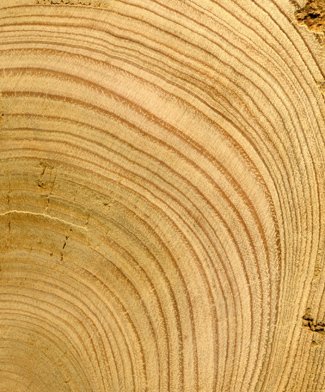Snow gums shed light on past climate

TREE RINGS OF THE snow gum are being used to build an Australian climate record that stretches back 500 years. By creating a timeline of climate history using these rings – a practice known as dendroclimatology – scientists hope to provide information for policy-makers that can influence decisions about infrastructure and water supplies.
“It’s ironic how the snowy gum [Eucalyptus pauciflora] tree doesn’t like snow,” says Dr Matthew Brookhouse, spearheading the study at the Australian National University in Canberra. For that reason, he says, the tree is ideal for observing growth and seasonal change. “Tree rings are typically not very clear in Australia, but they are clear at the alpine tree line in the snowy gum because the trees are so sensitive to the temperature.”
For decades, tree rings have been used as a kind of clock to indicate the age of trees (even in fossils that are tens of thousands of years old). Matthew’s research now adds to that body of work by using the relative distances between each ring to give information about tree growth and changes in the environment, such as snow quantity and temperature.
“If we have a deep snow pack in the winter, the snow sits on the ground for a long time and it takes a long time for the tree to grow because it must wait for the snow to melt and for the sun to warm the soil,” he says. “The record of the snowy gum tree shows a relationship of how deep snow is in the winter and the growth rate in the following season.”
According to Matthew, a year of warmer temperatures correlates with a wider tree ring, and a year of cooler growing season temperatures correlates with narrower tree ring.

Tree rings of the snow gum (Photo: Sarah Goldin)
Dam plans
Using a process that doesn’t damage the tree, Matthew takes 5 mm core samples from snow gum trees in the Brindabella Range in the ACT, Baw Baw in Victoria, and the Snowy Mountains in NSW.
By showing snow levels, and therefore, the timing of snow melting, the rings indicate years of heavy rainfall, which could influence future water planning decisions such as the building of dams.
Much infrastructure planning in southern Australia occurred when there was relatively high rain and high flow in rivers, Matthew says. Structures, such as the Snowy Mountains Scheme hydro-electric system and the Thomson dam east of Melbourne, were built with wetter conditions in mind.
“When projecting future projects, you need to have an idea of historical trends in resource availability. When that resource is affected by seasonal factors, understanding the variation in your resource is important,” says Matthew. He believes the study is especially pertinent in Australia where the water supply varies widely.
Matthew has expanded his research to study the mountain plum pine as part of a new partnership between ANU and the government-owned utility companies in the ACT. The pine can live 400-500 years and will be used to observe river flow and drought frequency. According to him, the mountain plum pine samples – which could take 2-3 years to analyse – will be worth the wait as they provide a direct link to understanding the variability one of our most valuable resources.
RELATED STORIES




